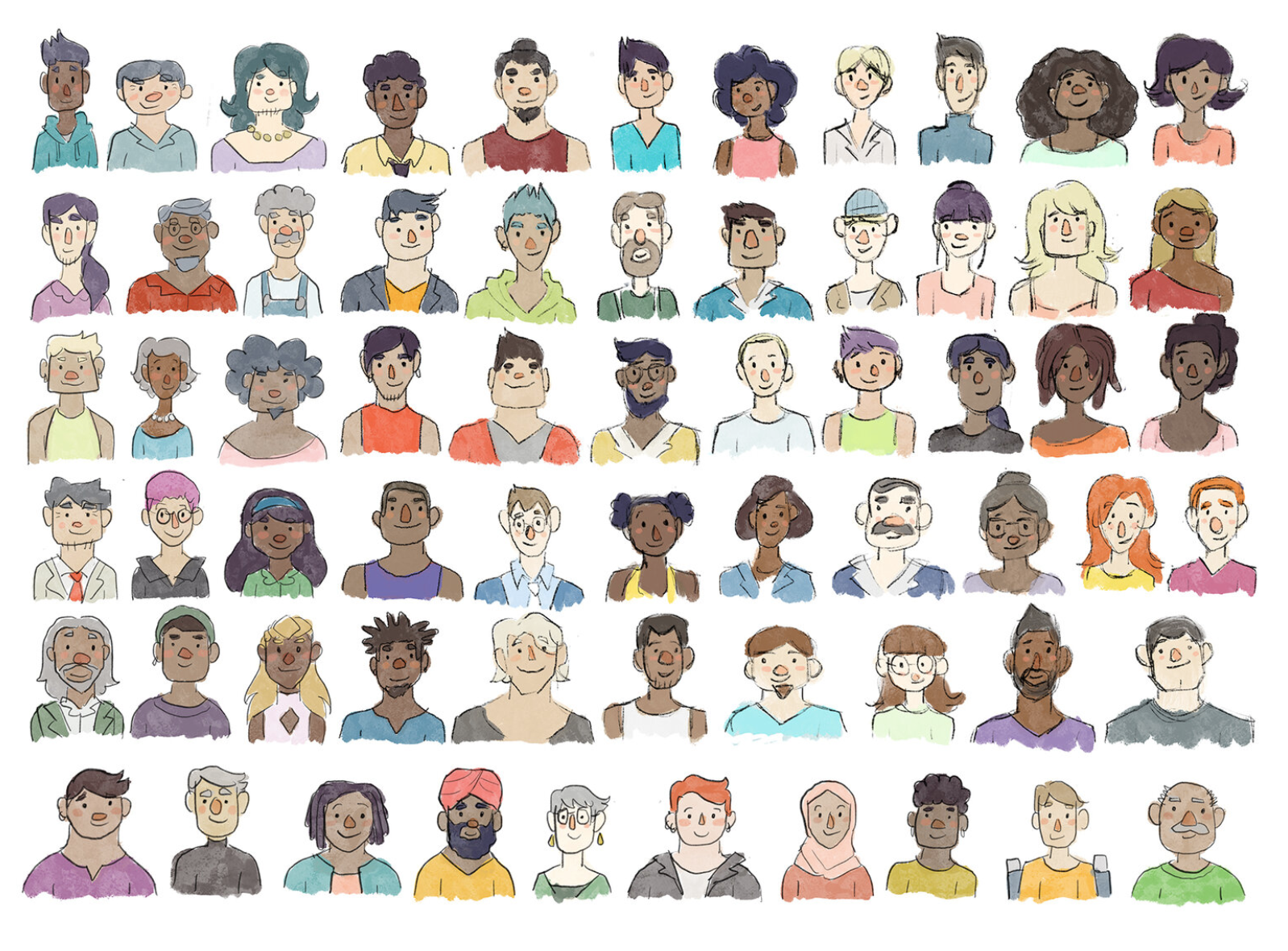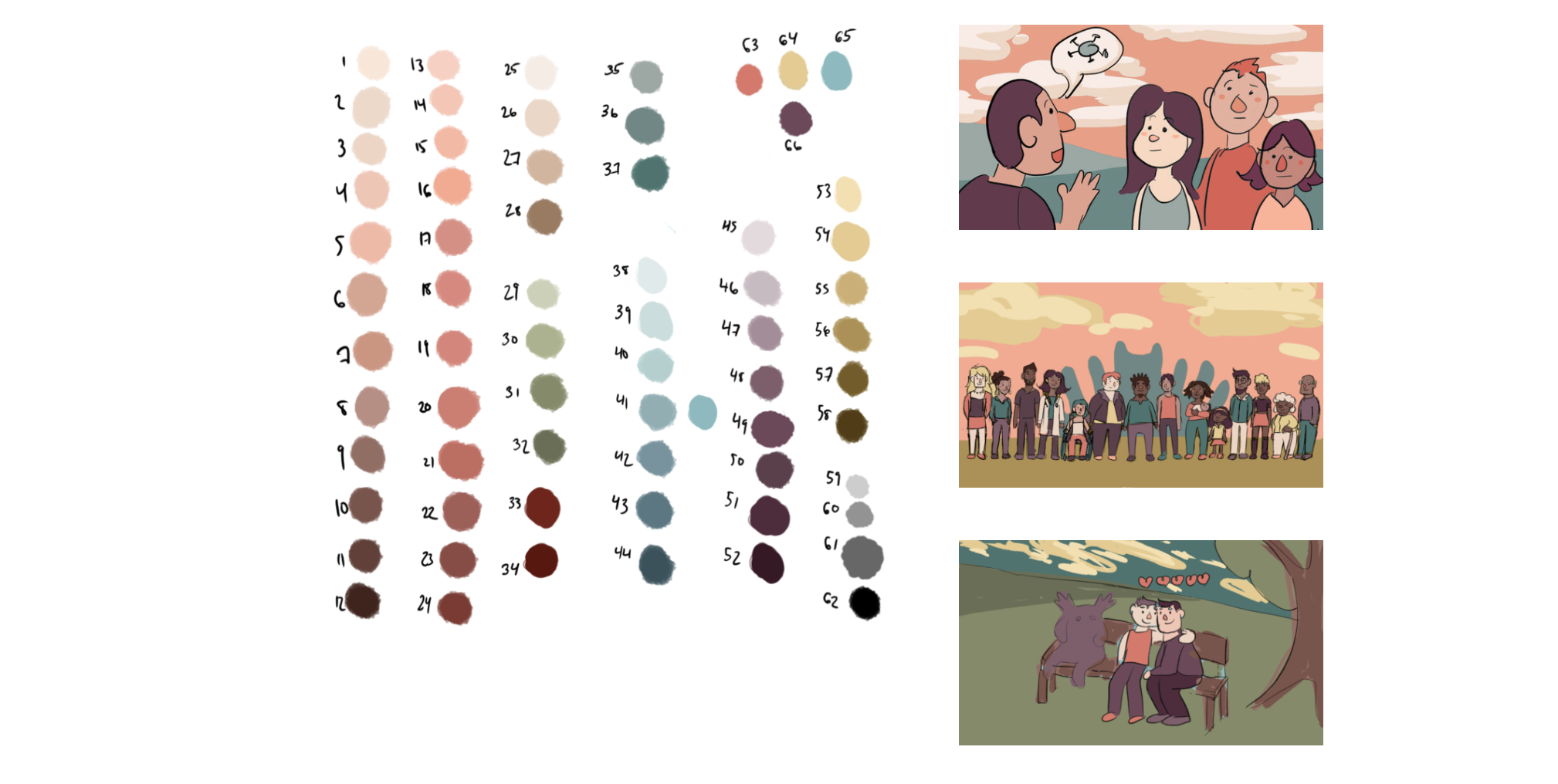Breaking Down HIV Stigma: Using Animation to Connect, Challenge and Delight
Breaking Down HIV Stigma: Using Animation to Connect, Challenge and Delight
From blob monsters that swell and contort expressing human emotion, to a culturally safe cast of diverse characters––all bundled in an unexpected custom score––Jennifer Lee was on track to creating something powerful.
“For my thesis project, I was investigating how complex, abstract information could be presented in a way that was easy to understand, approachable, and engaging,” says Lee, a Master of Science in Biomedical Communications student at the University of Toronto.
Presenting Jenn Lee's final thesis animation....
Learn about how it all came together...
As part of the knowledge transfer and exchange phase of a community-led research initiative, The HIV Stigma Index Project, Lee dived deep into the biomedical communications space for ideas and inspiration. Pushing beyond the obvious and expected, she landed on 2D animation to be her secret weapon to pummel stigma.
It is critical to involve people with lived experience
With the help of James Watson from the HIV Stigma Index Project––and host of the pozcast on this site––Lee was able to bring together a community advisory committee consisting of seven experts, six who disclosed they were living with HIV. The team was integral in helping Lee develop the content of the animation.
“It is critical to involve people with lived experience in projects like this, especially with the topic of HIV-related stigma,” says Lee, adding, “they not only advised me on what information was most important to include, but even more critically, how it should be presented.” Lee consulted with the peer group throughout the project, who provided her with invaluable, nuanced feedback at every stage.

Lee looked for further direction and advice from faculty and program peers within the biomedical communications program. She explains, “…this was my first time creating an animation, so they were very helpful guiding me through the process––from developing a script, storyboards, and an animatic to creating the final animation."
While writing the script, Lee developed some key visuals to help frame her bigger idea. She conceived the notion of 'blob monsters' to help make the concept more concrete and approachable. This representation of diversity among characters allowed Lee to show varying forms of stigma, and how it often manifests differently among those who've experienced it. The peer advisory group had particularly impressed this fact about stigma on Lee.

Then came the ‘casting call’. “It was important to me to have a diverse cast, while also taking into consideration the populations most affected by HIV."
With iPad in hand, Lee began roughing out storyboards using the creative software platform, Procreate. "I combined the script and storyboards into an animatic, setting the story boards to my voice in a 'scratch' narration. I put this together in After Effects."
It was important to have a diverse cast, while also taking into consideration the populations most affected by HIV
Colour played an equally emotive role. Lee discovered that a unified colour palette would keep the animation cohesive and aesthetically flowing. "... Yet I still needed plenty of diverse colours, ensuring any one wasn't overly saturated or visually overwhelming," says Lee. "In the end, I added a lot of skin tones in order to express great diversity."

Pulling it all together, Lee's animation was done in both Adobe Animate and Adobe After Effects, using a combination of frame-by-frame and keyframe animation techniques. The background was created in Clip Studio Paint, and texture and effects were added in After Effects.
Like each of the animation's unique elements, the music also needed to be purposeful. Brand agency, ConsumptionCo (co-creators of The Positive Effect program) helped Lee push the music dial. Agreeing on emotive and passionate, earnest yet optimistic as guideposts, they worked with Finnish virtuoso, Miro Rantalainen, to create an unexpectedly quirky, yet beautiful score.
"My goal here is to position movement and texture just behind each scene, strengthening the emotional response of the watcher/listener," says, Rantalainen. For example, he magically makes feelings like 'hope' virtually audible by putting pizzicato, or 'plucked strings', to good use.
I hope it will be useful in educating people about HIV stigma
Sean B. Rourke, a scientist with the MAP Centre for Urban Health Solutions at St. Michael’s Hospital, and program content / thesis advisor, describes Lee's final project as, "... at once challenging, emotive, impactful and memorable." Many have since added, beautiful.
"It was a very valuable learning experience, I'm super happy with the final product," says Lee. "I hope it will be useful in educating people about HIV stigma."
"... And help to correct the myths and misinformation," Rourke chimes in. "It's all about, SHIFTING MINDSETS, ENRICHING LIVES."
Explore more about HIV stigma inside the Erasing Stigma section on this site; plus get immersed, and inspired to share some of the powerful experiences from people living with HIV in Our Stories.
Learn more about Lee’s work at jennleevisuals.ca










